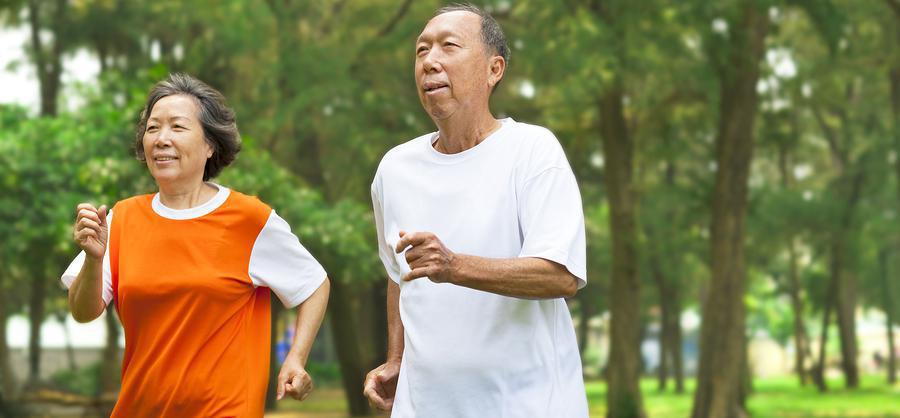It's no surprise that our bodies change as we get older. Some of these changes are noticeable, while others are not as obvious. Starting at about age 30, bone density starts to decrease in both women and men. In women, this loss continues and speeds up after menopause. Consequently, our bones become more brittle and are more susceptible to a break as we age. According to the International Osteoporosis Foundation, one in three women and one in five men over the age of 50 will experience osteoporotic fractures.
Fortunately, regular exercise can go a long way toward bone strengthening, helping avoid or slow down bone loss in men and women alike. There are two general exercise groups that promote bone strengthening by building and sustaining bone density: weight-bearing and strength-training exercises.
Weight-Bearing Exercises
Weight-bearing activities work your body's bones and muscles against the forces of gravity while you're standing up, causing your muscles to pull on your bones. This type of action helps increase or preserve your bone density.
Weight-bearing exercise can be high- or low-impact. High-impact weight-bearing exercises include running, hiking, dancing, stair climbing, and jumping rope. Low-impact weight-bearing exercises, while not as beneficial as high-impact weight bearing exercises, are a dependable substitute if you are not able to perform high-impact activities due to balance issues or fall risks. Examples of low-impact exercises include running on standing elliptical machines, low-impact aerobics, and walking.
Strength-Training Exercises
Strength-training exercises are activities in which you incorporate some form of resistance, usually weights, against your body. By putting stress on your muscles and bones, strength-training exercises increase muscular strength and improve your bone density. Common strength-training exercises include weight lifting with machines or hand weights; resistance activities, such as elastic exercise bands or pulley machines; and body-weight and functional activities, such as repetitively standing up from a sitting position or standing up on your tiptoes.
The main objective of strength-training exercise is to increase your muscle mass in order to improve your balance and strength, which helps decrease risk factors for falls and bone fractures. Yoga and Pilates can also improve strength, flexibility, and balance. While there are numerous benefits to yoga and Pilates, it is important to note that some positions may not be appropriate if you have osteoporosis or are at increased risk of fractures, but substitutions or modifications that have the same effect may be available.
Talk to your doctor before beginning any exercises that focus on bone strengthening, especially if you have ever broken a bone due to osteoporosis or are at risk of breaking a bone. Your doctor or a rehabilitation professional can help you decide which exercises are safe for you and make modifications when appropriate.




